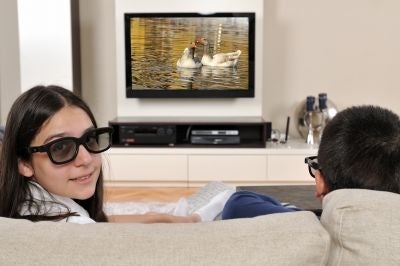Your support helps us to tell the story
From reproductive rights to climate change to Big Tech, The Independent is on the ground when the story is developing. Whether it's investigating the financials of Elon Musk's pro-Trump PAC or producing our latest documentary, 'The A Word', which shines a light on the American women fighting for reproductive rights, we know how important it is to parse out the facts from the messaging.
At such a critical moment in US history, we need reporters on the ground. Your donation allows us to keep sending journalists to speak to both sides of the story.
The Independent is trusted by Americans across the entire political spectrum. And unlike many other quality news outlets, we choose not to lock Americans out of our reporting and analysis with paywalls. We believe quality journalism should be available to everyone, paid for by those who can afford it.
Your support makes all the difference.Panasonic Corporation, Samsung Electronics Co., Ltd., Sony Corporation and X6D Limited (XPAND 3D) have teamed up to create a new technology standard for consumer 3D active glasses which will enable "a better consumer experience across products."
The joint project will be called the “Full HD 3D Glasses Initiative" and "will help further drive consumer adoption and understanding of active 3D - the technology that provides the clearest and most immersive 3D experience available,” said Jurack Chae, vice president, R&D Team, Visual Display Business, Samsung Electronics.
The initiative is a boon for consumers as it will see some of the world's leading 3D technology providers and 3D TV manufacturers introduce universal active 3D glasses into the market.
"Glasses utilizing 3D active technology benefit consumers in that they enable Full HD 3D picture quality to be displayed to each eye, as well as a greater freedom of movement thanks to Bluetooth® technology," explained Sony in an August 8 release.
Market researcher the NPD Group found active 3D TV technology to be the most popular choice for consumers looking to purchase a 3D TV. According to NPD an average of 96 percent of the 3D TV market in the US was made up of active 3D technology in the first half of 2011.
Up until now the majority of active 3D glasses have been designed to be TV or brand specific, meaning that consumers with active 3D glasses synched to a Samsung 3D TV couldn't use their 3D glasses at their friends' house to watch 3D films on a Panasonic 3D TV.
The Full HD 3D Glasses Initiative license is expected to be released in September. Development of products meeting the standard will start shortly after with the universal glasses expected to be available to consumers in 2012.
According to Sony, the glasses are "targeted to be backward compatible with 2011 3D active TVs."

Join our commenting forum
Join thought-provoking conversations, follow other Independent readers and see their replies
Comments